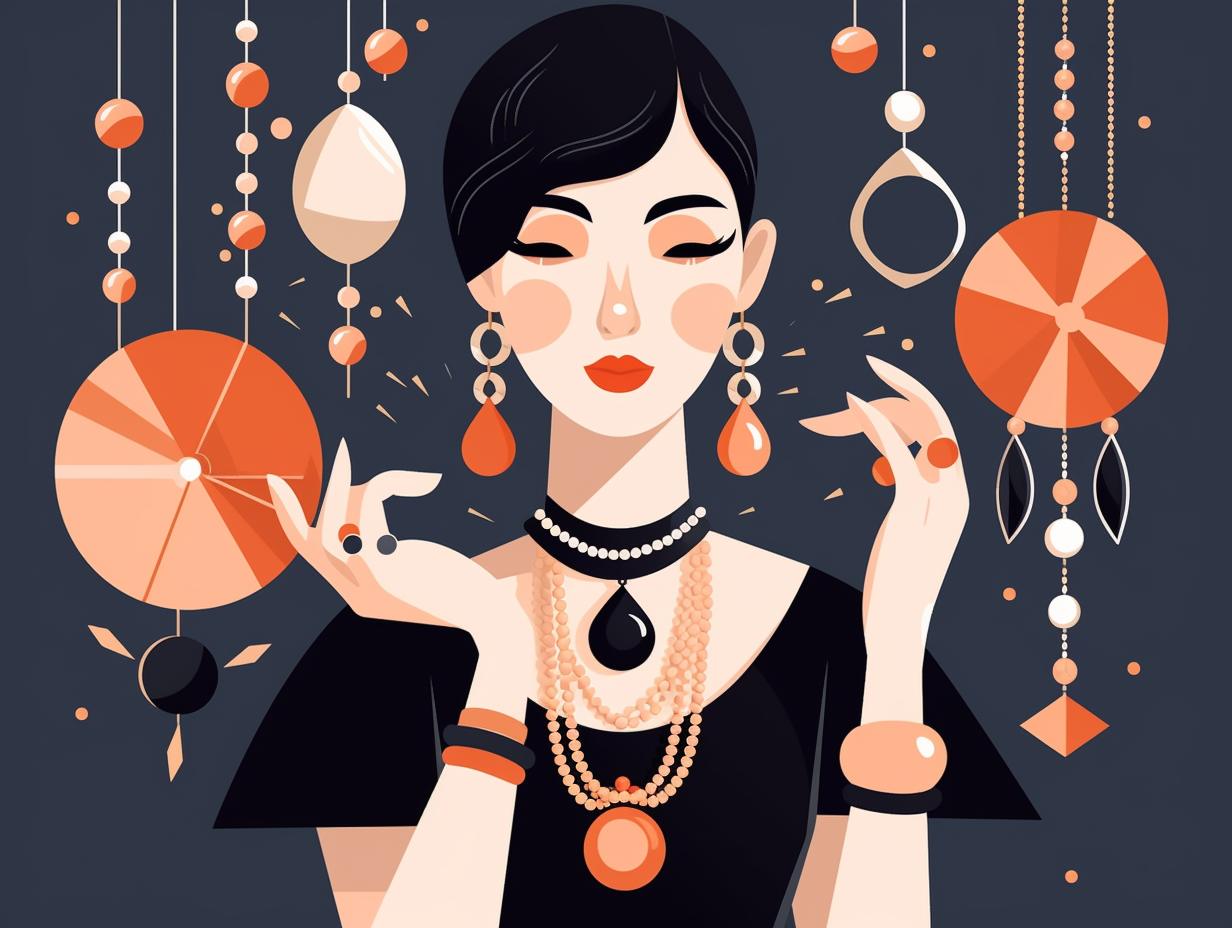10 Dazzling Fun Facts About Jewelry You Never Knew

1. Gold: The Kardashians of Metals
Gold, the Kardashians of the metal world: always shiny and malleable, but not always 100% genuine. You see, much like your favorite reality TV star, gold needs a bit of reinforcement to truly stand out; that's why 14-karat gold pieces, like the ones found in Cobali, contain only 58.3% pure gold mixed with other metals for added strength and durability. How gold is that?
Source => cobalitreasure.com
2. King Tut's Heavyweight Death Mask
They say King Tut had a face only a mother could love, but he certainly knew how to accessorize for the afterlife: His death mask weighed in at an astonishing 22.5 pounds and was crafted entirely from hammered gold sheets.
Source => khanacademy.org

Did you know that during World War II, soldiers wore identification bracelets not just for sentiment, but as a vital means to convey crucial information in case of injuries or fatalities? Discover more about the life-saving purposes of these intriguing accessories.
=> Fun Facts about Bracelets
3. Opals: Beautifully Hydrated Gems
If you thought the notion of "having a bit of water weight" was reserved just for us mere mortals, think again: opals, those ethereal show-offs of the mineral world, contain a water content that ranges from 3%-21% of their total weight - typically between 6%-10% - which creates that stunning play-of-color as light dances through their diffraction-grating silica spheres.
Source => mccrone.com
4. Napoleon's Acrostic Jewelry Love Affair
Who knew that Napoleon had a secret love for word games on his jewels, possibly even predating the classic game of Scrabble: Jean-Baptiste Mellerio invented acrostic jewelry during the Victorian era, where gemstones spelled out words or messages, with even Napoleon Bonaparte commissioning pieces for his family, making "REGARD" and "DEAREST" popular expressions in acrostic jewelry that continue to inspire modern designers like Jessica McCormack and Erica Weiner.
Source => 4cs.gia.edu

5. Amethyst, The Sobering Greek Stone
Say "cheers!" to our ancient Greek friends, and let us raise a toast to the sobering powers of the designated precious stone, the amethyst: Known as "amethystos" in ancient Greece, which translates to "not drunk," wearing this gemstone was thought to prevent or cure intoxication, as they strongly believed in its mystical abilities to keep one level-headed and booze-free.
Source => merriam-webster.com
6. Black Diamonds: Out-of-This-World Bling
Not all diamonds are created equal, certainly not when they're extraterrestrial party crashers: Black diamonds, or carbonado diamonds, are believed to have originated from outer space, as researchers in the Astrophysical Journal Letters have found traces of nitrogen and hydrogen, which are indicators of an interstellar origin. Unlike their earthly diamond counterparts found in volcanic rocks, these space-originated gems used to be asteroid-sized and made their cosmic landing on Earth eons ago, with the present-day deposits only found in Brazil and the Central African Republic, avoiding the mainstream diamond mining areas like the stars they are.
Source => nsf.gov
7. Adding Sparkle to Your Desserts
Bling from your cake to your plate, for that extra glitz and glam life: DiamonDust™ edible glitter by The Sugar Art brings sparkle to your desserts with 100% edible, Kosher, diamond-like shimmer - best applied dry atop icings, while mixing or painting may result in shine-stealing outcomes.
Source => countrykitchensa.com
8. The Record-Shattering Cullinan Diamond
If bling is your thing, lend an ear: the Cullinan diamond was more than just jaw-dropping, it was record-shattering, tipping the scales at an astounding 3106 carats! Discovered in South Africa in 1905, King Edward VII of the UK received it as a sparkly present. This behemoth of a gem has since been carved into nine large stones and ninety-six smaller ones, with two of the royal rocks making their way into the Crown Jewels. Talk about living large!
Source => capetowndiamondmuseum.org
9. Opulence, Opals, and European Aristocrats
In a time when European aristocrats couldn't resist showing off their "opulence" with their Opals, they ruled the fashion roost and taunted Russian babooshkas: The beautiful, color-play gemstone, Opal, was once an exclusive possession in Europe, sourced only from present-day Slovenia, but its reputation took a nosedive after a superstition-saddled novel in 1829 propelled its association with the evil eye. Fear not though, modern gem-lovers still adore this iridescent beauty for its visual appeal, vision-enhancing properties, and the ability to spruce-up one's imagination.
Source => moonmagic.com

10. Salty History: From Roman Salaries to Jewelry
When life gives you lemons, make jewelry: Though it may seem odd, Roman soldiers were once paid in salt, the very core of the word "salary," and this valuable commodity was even used as currency for items like jewelry. In fact, salt continues to play a role in jewelry creation today through techniques like electrolysis for metal plating, making it a sprinkling of history we wear around our necks and fingers!
Source => moonrisecrystals.com
Related Fun Facts




















